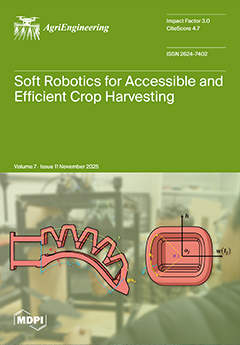Open AccessArticle
Innovative Use of Ultra-Low-Frequency Dynamic Electronic Impulses for Sustainable Performance of Drippers Applying Produced Water
by
Norlan Leonel Ramos Cruz, Luara Patrícia Lopes Morais, Daniel Valadão Silva, José Francismar de Medeiros, Frederico Ribeiro do Carmo, Antônio Gustavo de Luna Souto, Luiz Fernando de Sousa Antunes, Eulene Francisco da Silva, Simone Cristina Freitas de Carvalho, Palloma Vitória Carlos de Oliveira, Stefeson Bezerra de Melo, Gustavo Lopes Muniz, Layla Bruna Lopes Reges and Rafael Oliveira Batista
Viewed by 575
Abstract
Clogging is a major constraint to the agricultural reuse of produced water; however, ultra-low-frequency dynamic electronic pulses (EPs) can help control biofouling in drip emitters. This study aimed to evaluate the reduction in clogging in non-self-compensating emitters applying onshore oil-and-gas-produced water treated with
[...] Read more.
Clogging is a major constraint to the agricultural reuse of produced water; however, ultra-low-frequency dynamic electronic pulses (EPs) can help control biofouling in drip emitters. This study aimed to evaluate the reduction in clogging in non-self-compensating emitters applying onshore oil-and-gas-produced water treated with EP. Three experimental benches were assembled using drip irrigation units supplied with different water sources: water supply (WS), produced water with EP (OPW + EP), and produced water without treatment (OPW). Hydraulic performance was monitored every 40 h for 400 h using average flow rate variation (AFVR), flow variation coefficient (FVC), and distribution uniformity (UD) indices. Data were analyzed using RT-1 analysis with Bonferroni post hoc tests. Results showed that the interaction between water sources and evaluation times significantly (
p ≤ 0.01) affected the hydraulic indices. After 400 h, the indices ranked as UD and FVC: WS > OPW + EP > OPW, and AFVR: OPW + EP = WS > OPW. Although OPW presented a low risk of clogging, the application of EP mitigated the obstruction and maintained higher uniformity by reducing clogging. These findings demonstrate that ultra-low-frequency electronic pulses are an innovative anti-clogging technology and provide insights for the sustainable application of produced water.
Full article
►▼
Show Figures





